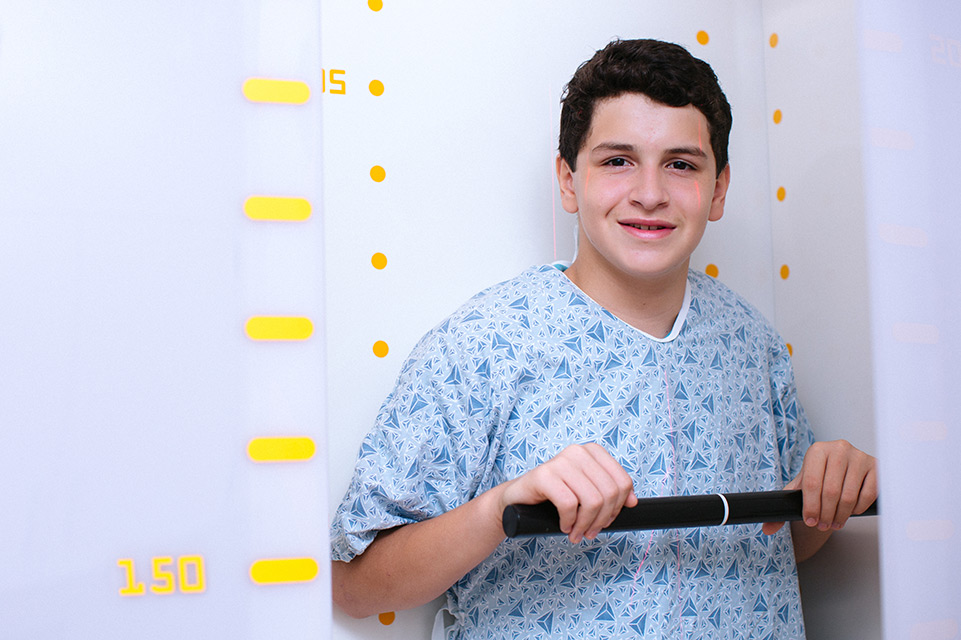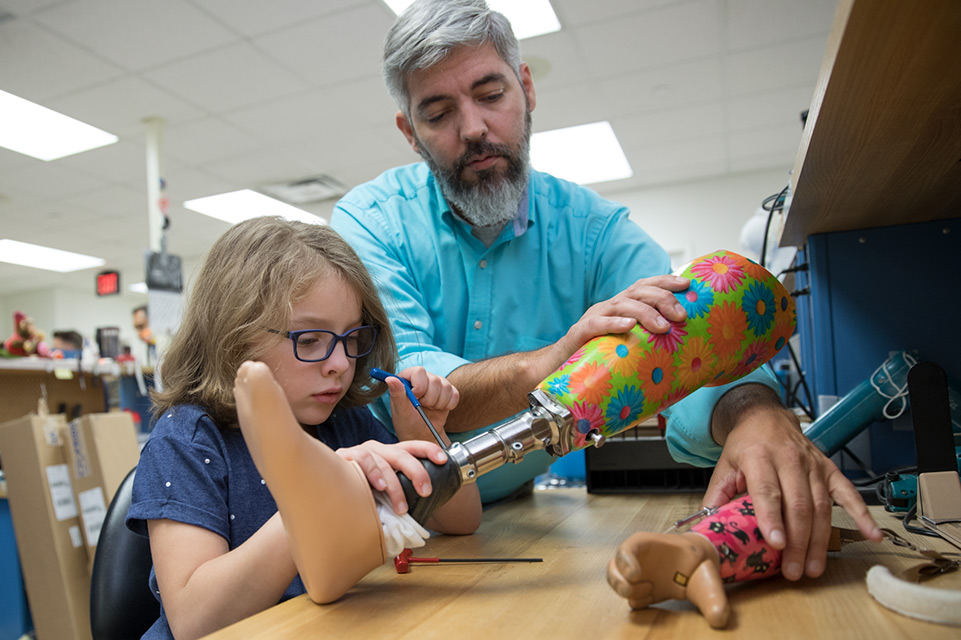Cleft Foot
Characterized by missing toes, a V-shaped foot or other visible difference, our orthopedic specialists provide knowledgeable treatment for cleft foot – a rare condition affecting fewer than one in 1 million babies.
Cleft foot is a congenital condition, meaning your baby was born with it after the foot didn't properly develop while in the womb. Many times, the condition will be diagnosed during pregnancy. Otherwise, cleft foot is clearly visible upon birth.
Cleft foot may be associated with cleft hand; however, there is no association with cleft lip or palate. Many times, cleft foot has a genetic origin. For that reason, our geneticist can provide counseling or education regarding cleft deformity.
Specific treatments and services may vary by location. Please contact a specific location for more information.
Evaluating Cleft Foot
What to expect during your child's exam:
- Your doctor will examine your child's foot – including ligaments, blood vessels, nerves and muscles – to determine what is normal, abnormal, missing or present.
- An X-ray can also help during your child's evaluation.
- Because cleft foot can be associated with other deformities or syndromes, the possibility of related conditions will be considered as well.
- Once a thorough examination is complete, options for treatment will be presented.
Treatment Options for Cleft Foot
Surgical, non-surgical or no need for further treatment? We are here to help you make the best decision for your child.
Foregoing Treatment
Some cleft feet function well and may not need treatment, including surgical intervention or special footwear. However, if the family or child is unhappy with the cosmetic appearance of the foot – a discussion with your orthopedic surgeon can help you to decide whether an operation to address the condition is the right choice for your family.
Non-surgical
Sometimes, accommodative shoes are necessary. Custom inserts to reduce callouses may also be a helpful option. If your child is able to wear an off-the-shelf shoe and he or she has full functional use of their foot – the condition may be considered mild, and special shoes or inserts are not needed.
Surgical
Cleft foot may cause toes to bend to as much as a 90 degree angle, making surgery necessary to gain full function. Surgery can also bring the toes together to eliminate the appearance of the cleft. If surgery is needed, it is not uncommon for more than one operation to be required in order to achieve the best results.
Despite what can appear to be a significant deformity at birth, children with cleft foot are generally able to run, play and enjoy all of the typical activities of childhood.

Surgical Safety and Patient Satisfaction are Top Priorities
Services We Provide
View All Related Services
Pediatric Orthotic and Prosthetic Services (POPS)

Care Management


